I'm starting a small personal tree nursery in pots this spring that I will take with me to a future homestead.
I've found a strong calling to propagate and plant trees in my lifetime. Our planet can use more trees badly and in a hurry.
- Enough new trees in the ground can halt and reverse global warming through carbon sequestration.
- Spending time in the forest reminds me how good it feels to be in an oxygen rich environment that trees can provide.
- Trees can provide food for me in years to come and especially for future generations.
- The more food we harvest from trees, the less need there is for industrial agriculture (which is damaging to the environment and adding carbon dioxide to the atmosphere).
- Trees provide food and habitat for nature's creatures.
- Trees are a natural source of fuel and energy.
While there are so many more reasons to plant trees, these are in my opinion the most important.
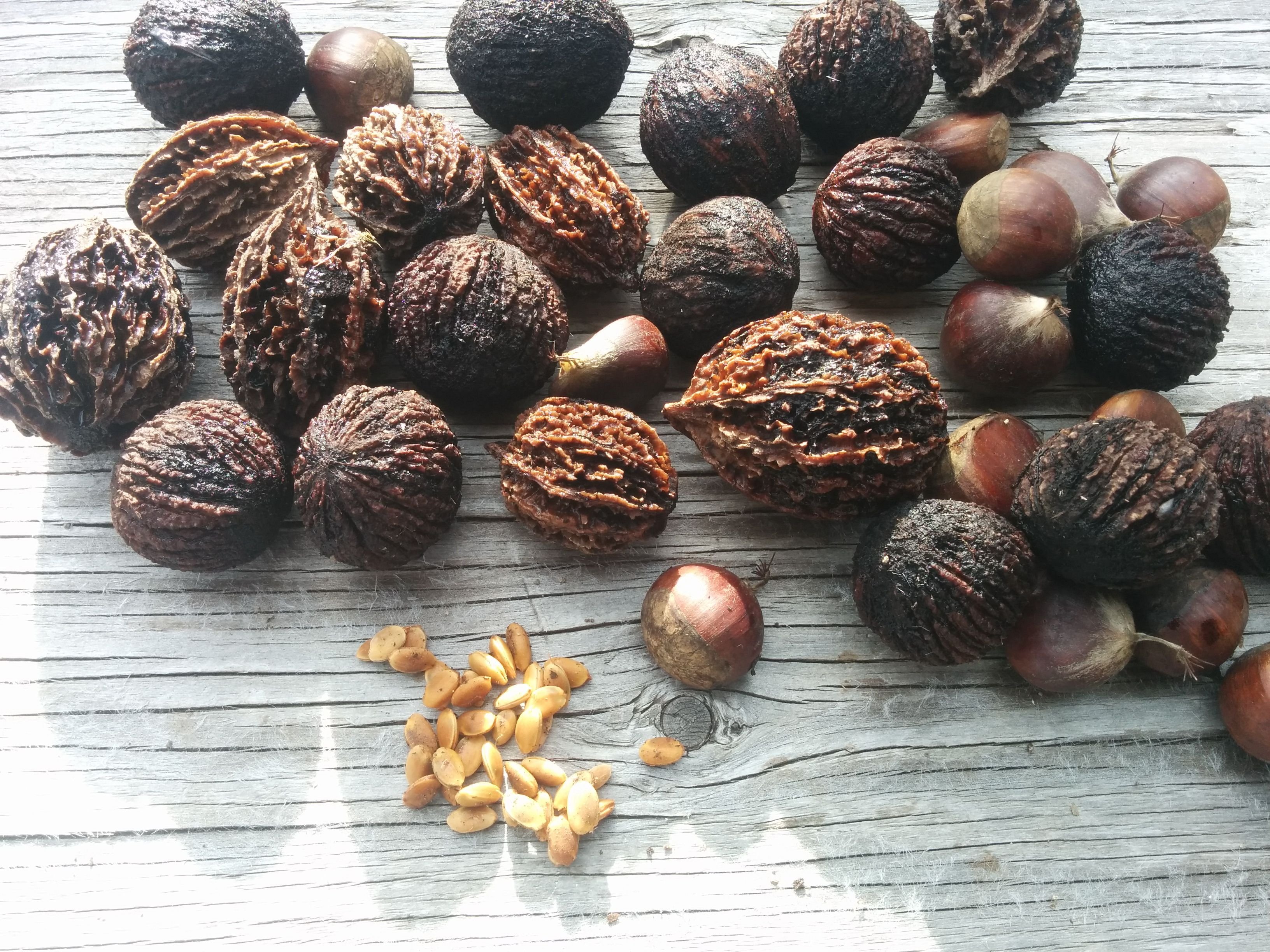
So I was excited when my friend gave me some tree seeds the other day because I had just decided I was mentally and physically ready to start a small mobile nursery :)
Keep in mind I am relatively new to propagating trees from seed. I am here to share what I know, but there's also a lot that I don't know - to the experts out there, if I missed something important please don't hesitate to share in the comments!
Why Start Trees From Seed?
I've been asked why I would want to plant a nut tree from seed when it can take 15-20 years to start producing nuts. I'll be a lot older by then and while there's a fairly good chance I'll see that happen I'm also not as ripe as I used to be - meaning there might not be many years of enjoyment after the trees start producing heavily.
A cloned tree (propagated from grafting, cuttings, root sprouts or layering) can produce fruit or nuts many many years sooner than a tree sprouted by seed. You may still have to wait 5-10 years for a good harvest depending on the species. But that's a lot quicker than planting by seed. That's a great argument for only cloning trees.
So why am I going to the trouble of planting from seed?
I come from a world of instant gratification. Planting trees from seed reminds me of the bigger picture. The world around me means everything to me, but I am less significant to the world. Instead of taking, if I give then I receive the true gift of connecting with the world. Planting trees by seed slows down my expectations and reminds me of the real reason why I am planting a tree. I don't need a nut tree. I can buy nuts from the store or better yet walk out into the forest and harvest acorns to my heart's content. Planting a tree is not a means of survival in a world of instant gratification. It is a symbol or gesture of appreciation for the natural world, eco systems and life cycles that we depend on under all the complex layers of or modern society.
Cloning (grafting, etc) trees allow us to have the same exact result when it comes to fruit and nuts. Which is great because when you want a Bosc pear tree, the tree gives you Bosc pears. But sexual reproduction is where its really at. Allowing trees to cross pollinate and growing a tree from the resulting seeds is allowing nature to express itself and to evolve. Don't get me wrong, I am all for cloning also which has great short term benefits, but I think that if all of our trees were grafted we would be creating weak orchards, groves and forests. I prefer to let go of absolute control and allow nature to express itself, allow it to produce variability. I will not get the same fruit that I expected, some trees' fruit will be better tasting, some will be not as good tasting. And there will be variability in genetics which would theoretically make a stand of trees more robust and resilient to problems like disease or pests.
While nature does clone trees in the wild (e.g. layering or root sprouts), sexual propagation is one of the primary ways of propagating most tree species. There's something romantic about allowing the pollen to fertilize the seeds of the trees that will live in my own garden.
It's cheap. You don't have to buy ANYTHING. You don't have to buy a tree, imagine that! You can save the seed yourself (or ask a friend for one or find some in nature), use your own soil and re-purpose a pot. If you don't have any nursery pots you can use a cardboard milk jug or a plastic yogurt container. If you don't have any of those you can put the seed right in the ground!
How I Planted These Seeds
I like this approach of planting seeds in pots because it keeps things simple and mobile (mobile since I don't know where the trees will be planted yet ;). The seeds my friend shared with me were already cold stratified over the winter so they are ready to sprout and don't require any cold stratification. So I simply put them in contact with soil.
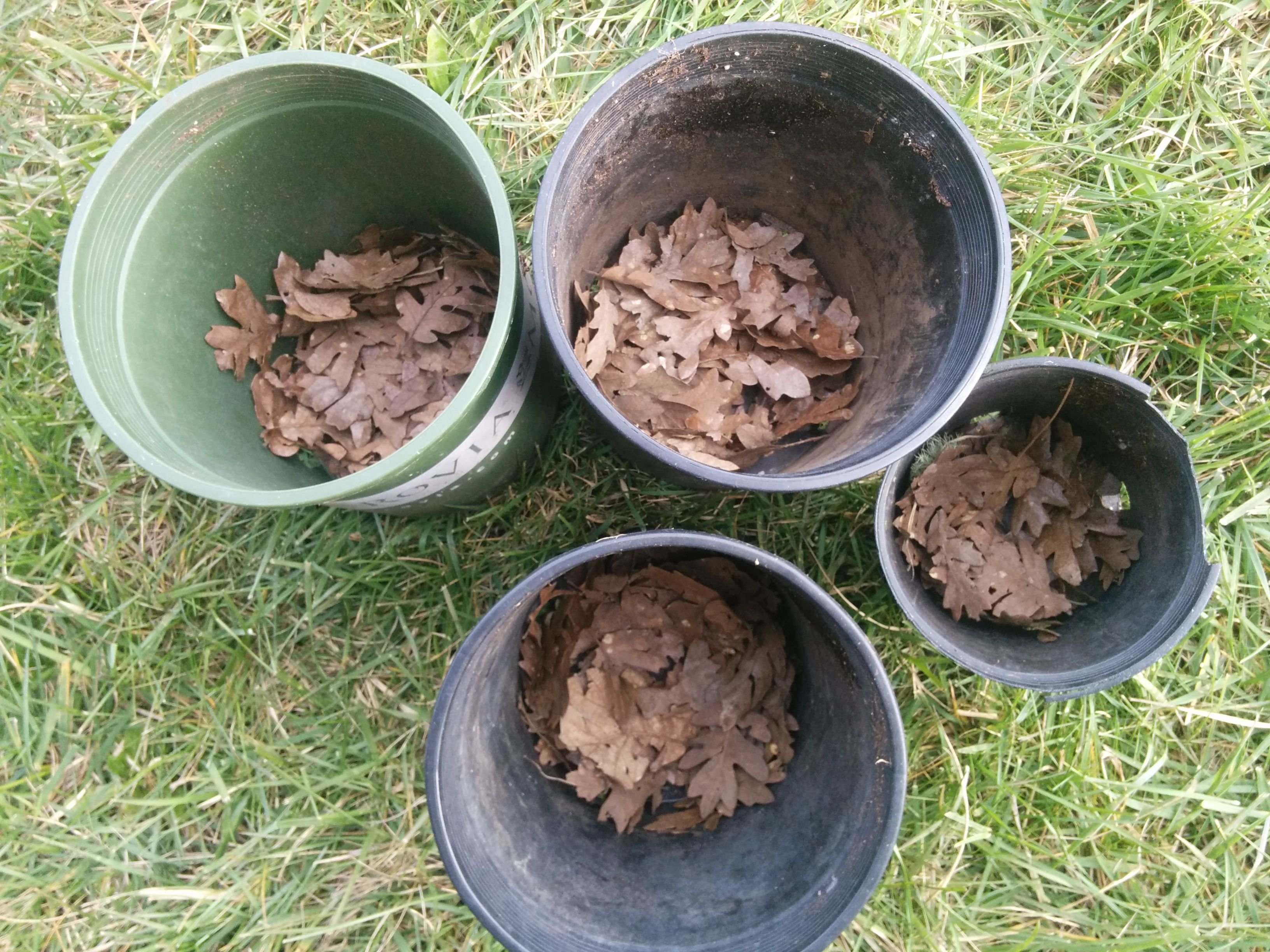
I prepped the pots by first putting some leaves at the bottom to help hold in the soil. This is not necessary but I like doing it anyway - I feel good about it.
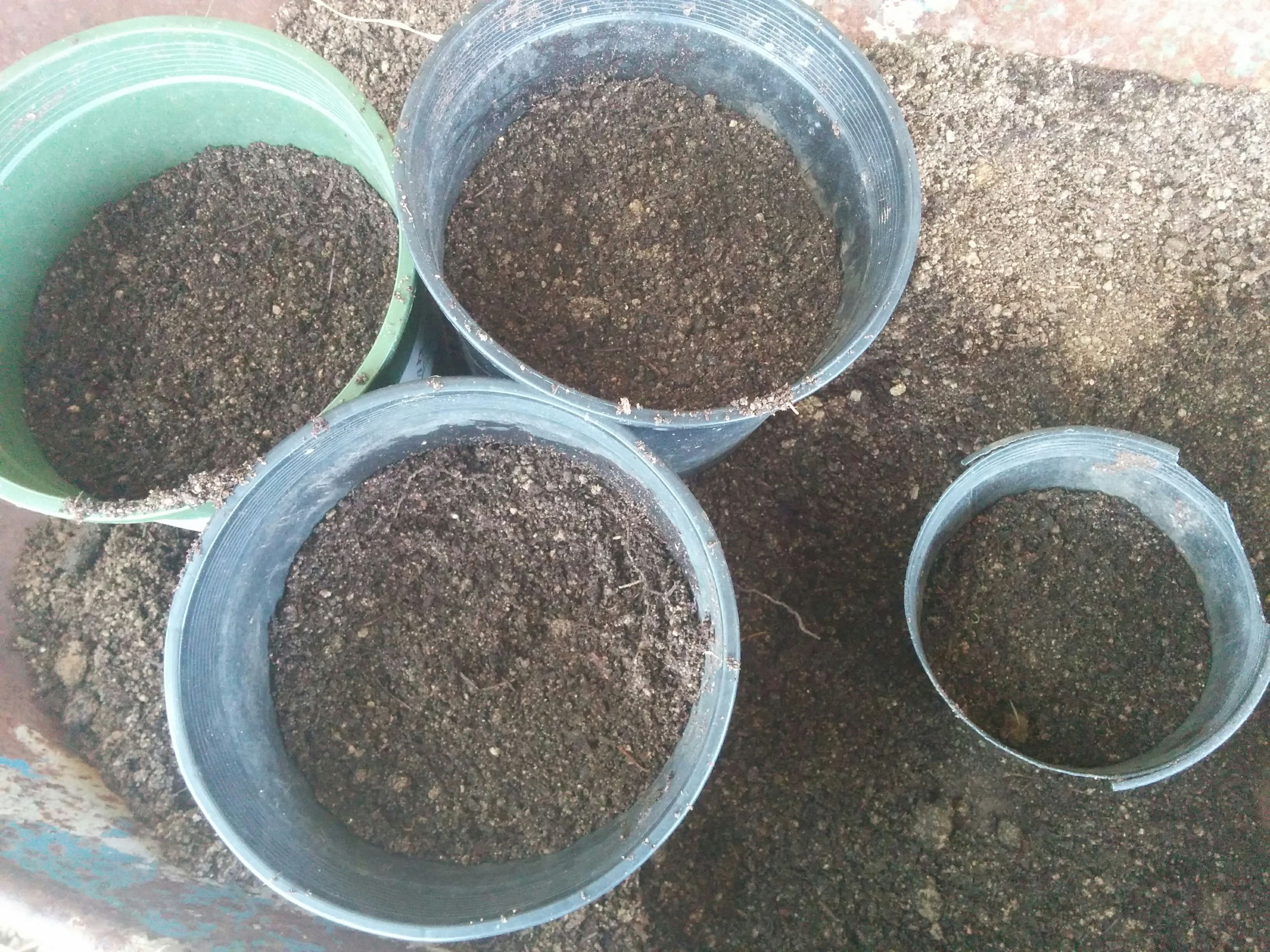
Then I add some potting soil. You'll want good drainage. A mixture with a good percent of sand is ideal. But any good potting soil would do. I am careful not to fill the pots too high because I want to add the seeds and then cover them with an adequate amount of soil.
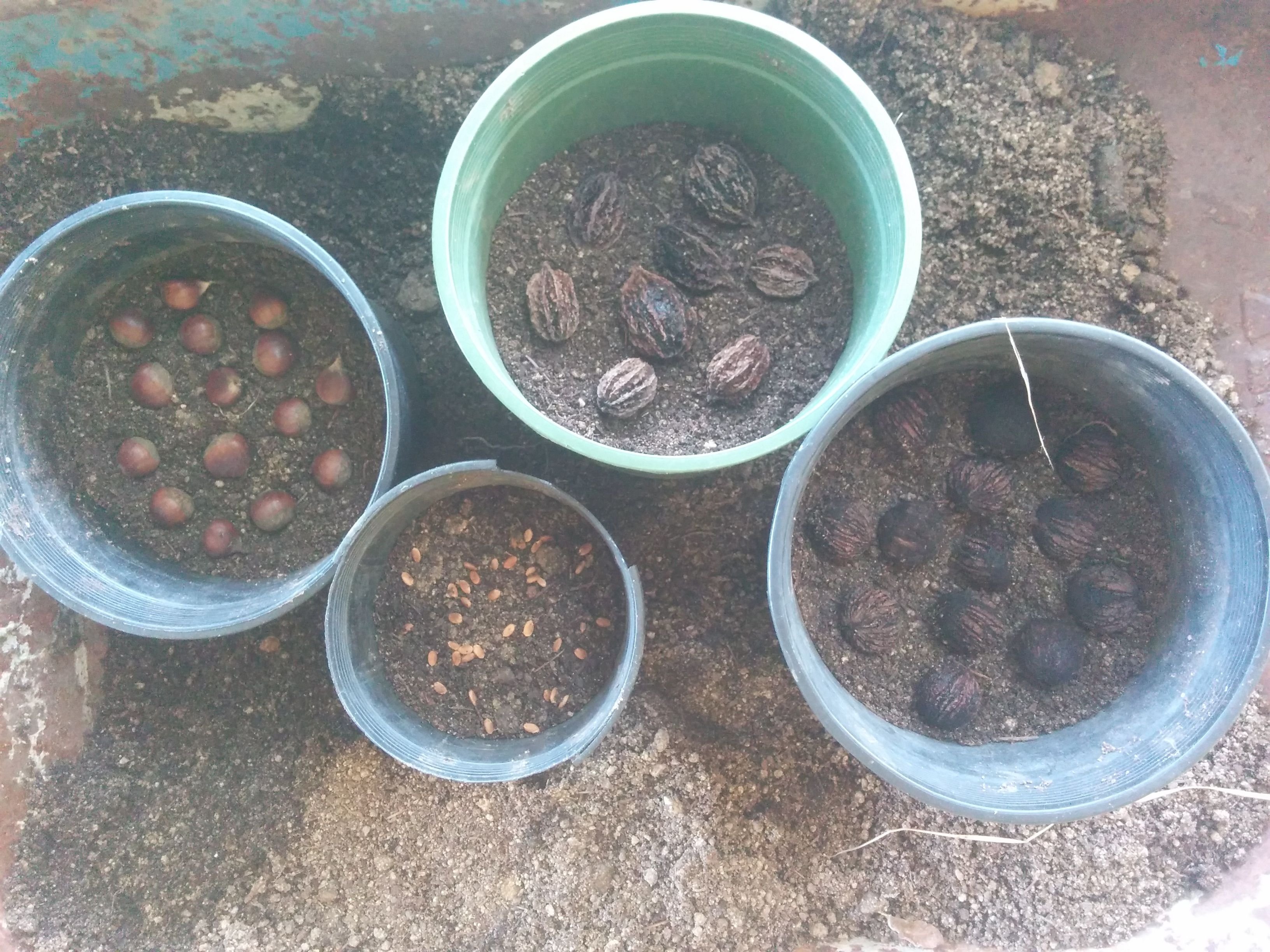
I am planting Chinese Chestnut, Buartnut, Black Walnut and Osage Orange. Spacing them fairly evenly is nice... but I'll be up potting them when they get big enough, so the spacing is not too critical.
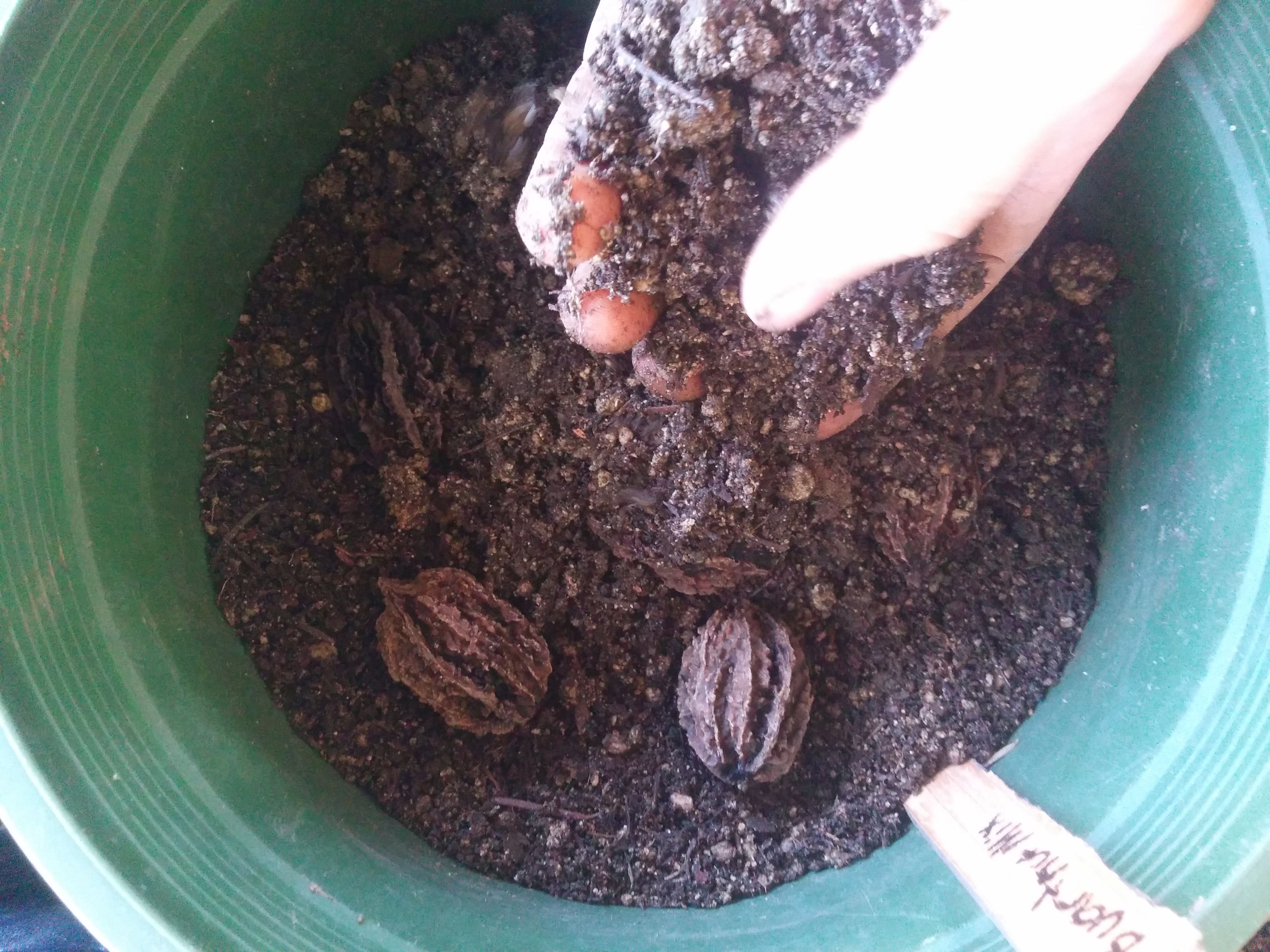
They are covered with soil. I'm going for about 2 times the height of the seeds, more or less.
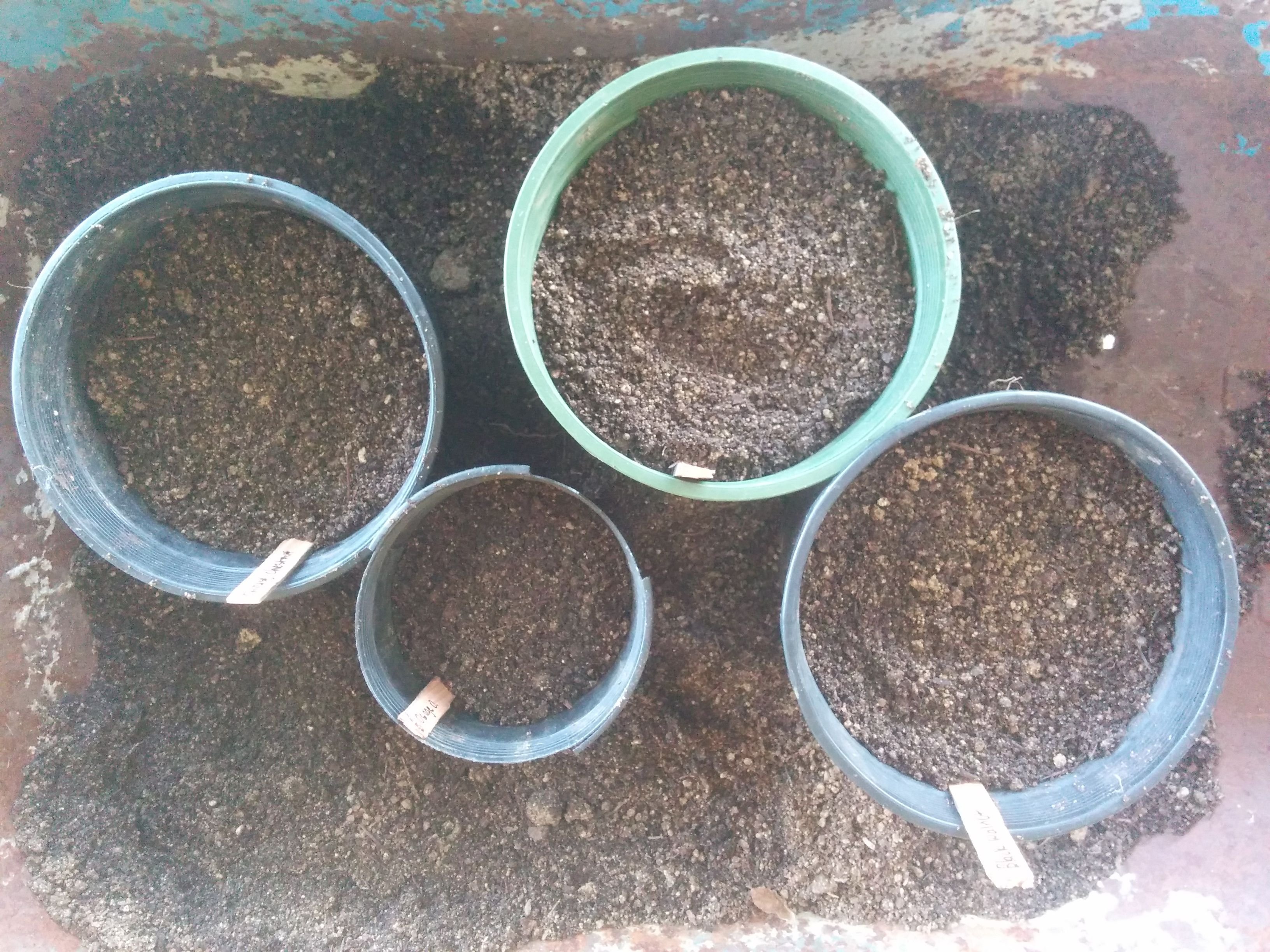
And labeled so that I don't forget what is what.
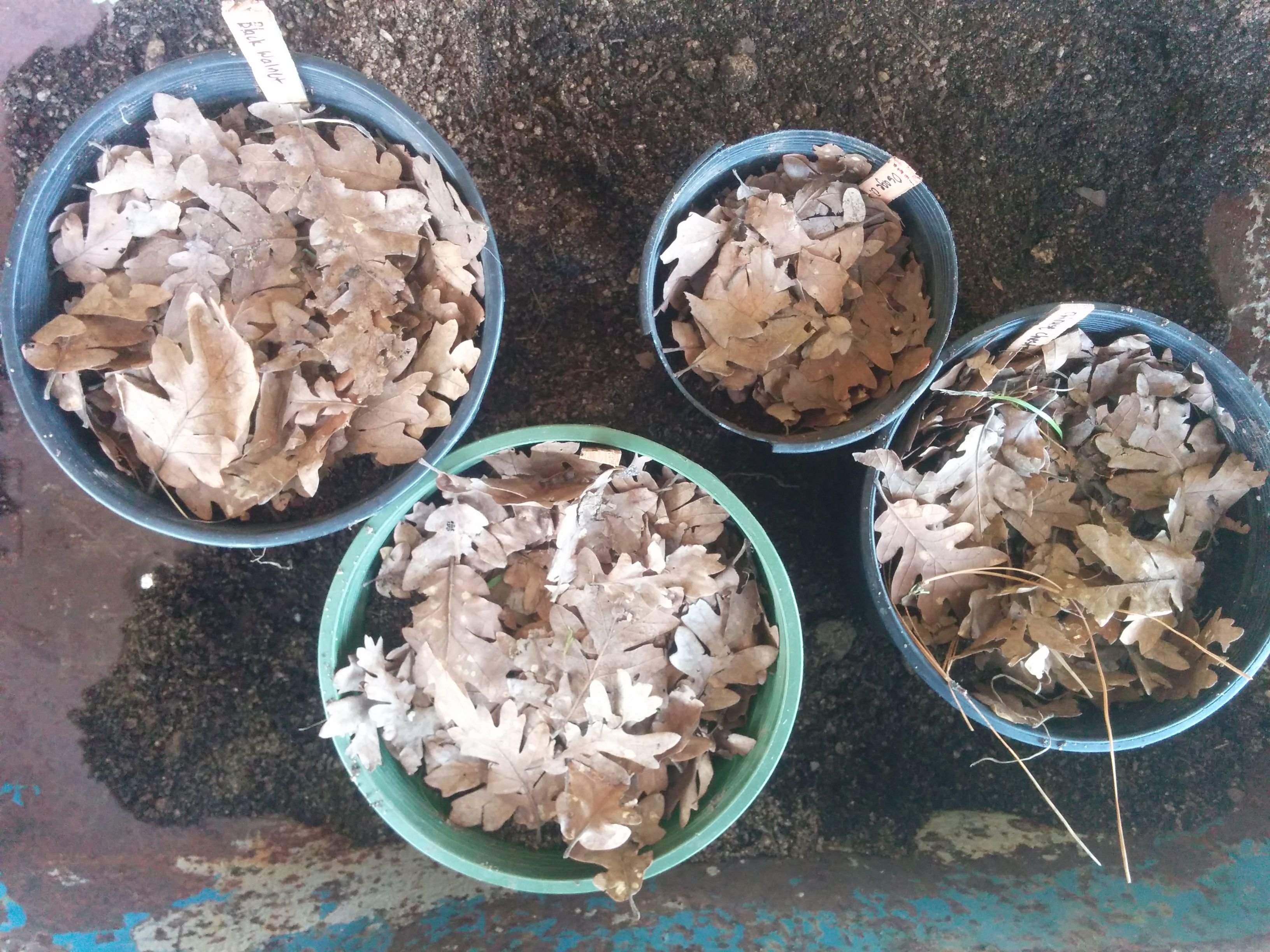
Finally I cover the pots with leaves. Again not critical but I like doing this because it helps prevent soil from splashing out and keeps the soil cooler and moister longer which will come in handy in the summer.
I put the pots out where they can get rained on. In the hotter part of the year its a good idea to keep them under some shade or dappled light. Direct sun all day might be a bit harsh.
If you suspect mice or rodents to be a problem (they do like to eat nuts and seeds) create a barrier so they cannot get into your soil and dig up the seeds. Hardware cloth can be good for that.
Cold Stratifying Outdoors
If a seed needs to be cold stratified that is a fancy way of saying that the seed needs to be in a cold moist environment for a certain period of time in order to germinate. It is part of a key combination that unlocks the seed. The combination includes factors such as temperature, oxygen, moisture and light.
The seeds I planted above were already cold stratified so I could just plant them in pots, now that spring is around the corner it is perfect timing for them to potentially "unlock" and germinate.
But what if the seed wasn't cold stratified? There are two common ways to cold stratify the seeds and here they are:
Stratification Method #1: Let Nature Cold Stratify for You
Cold stratification is basically letting the process of winter unlock the seeds. The easiest way to do that is to put the seeds through winter. If you live in a cold enough climate where there is actually a winter you can do this.
The timing is important. Take your seeds in the fall or winter and put them in pots like I did above. Then put them outside where they can freeze/thaw with the weather. Make sure they're protected from mice (more critical in the winter when food is scarce).
That's it! Then don't let the pots dry out when the weather warms and wait for them to sprout. Depending on the type of tree it can take 2 years or more to "unlock" so don't give up if it doesn't sprout by the end of spring.
Stratification Method #2: Pseudo Winter in the Fridge
Here's how you can cold stratify the seeds yourself which can come in handy if your winters don't get cold enough, or if you didn't get around to sticking them outside early enough for them to have time to cold stratify outdoors.
I find myself in the latter case. Winter is almost over and I find myself ready to start a tree nursery. Last winter this wasn't on my mind or it wasn't a priority otherwise I would have followed the previous method.
Now I find myself not wanting to wait another year to get started so I will create a cold stratifying environment for the seeds in the refrigerator. Many of the seeds I am working with require a stratification period for 2-3 months. Some less and some more.
So if it is mid march and I am aiming for 3 months stratification that brings me to mid June. That means that seeds might sprout in the summer or even later in the year. It's not ideal. Ideally I would have planned my cold stratification period to be ending right at the time spring was starting, so that the trees have enough chance to potentially sprout earlier in the year and enough time to develop as much as possible before next winter.
Anyway, I'm still going for it and let's see how it turns out this year and next year!
I read that it's best to create a mixture of 50/50 peat moss and sand. Ideally it is sterile to prevent any molds/fungus from happening during the time its stratifying. Enough water is applied so that it is a moist but not sopping environment for the seeds to live in.
I have some sand but I don't have peat moss. I did find another readily available resource that is growing abundant around here. I am not really sure if it is a moss but it definitely has the qualities I am looking for... moisture retention. I believe you could also use coconut coir in place of peat moss but don't quote me on that ;)
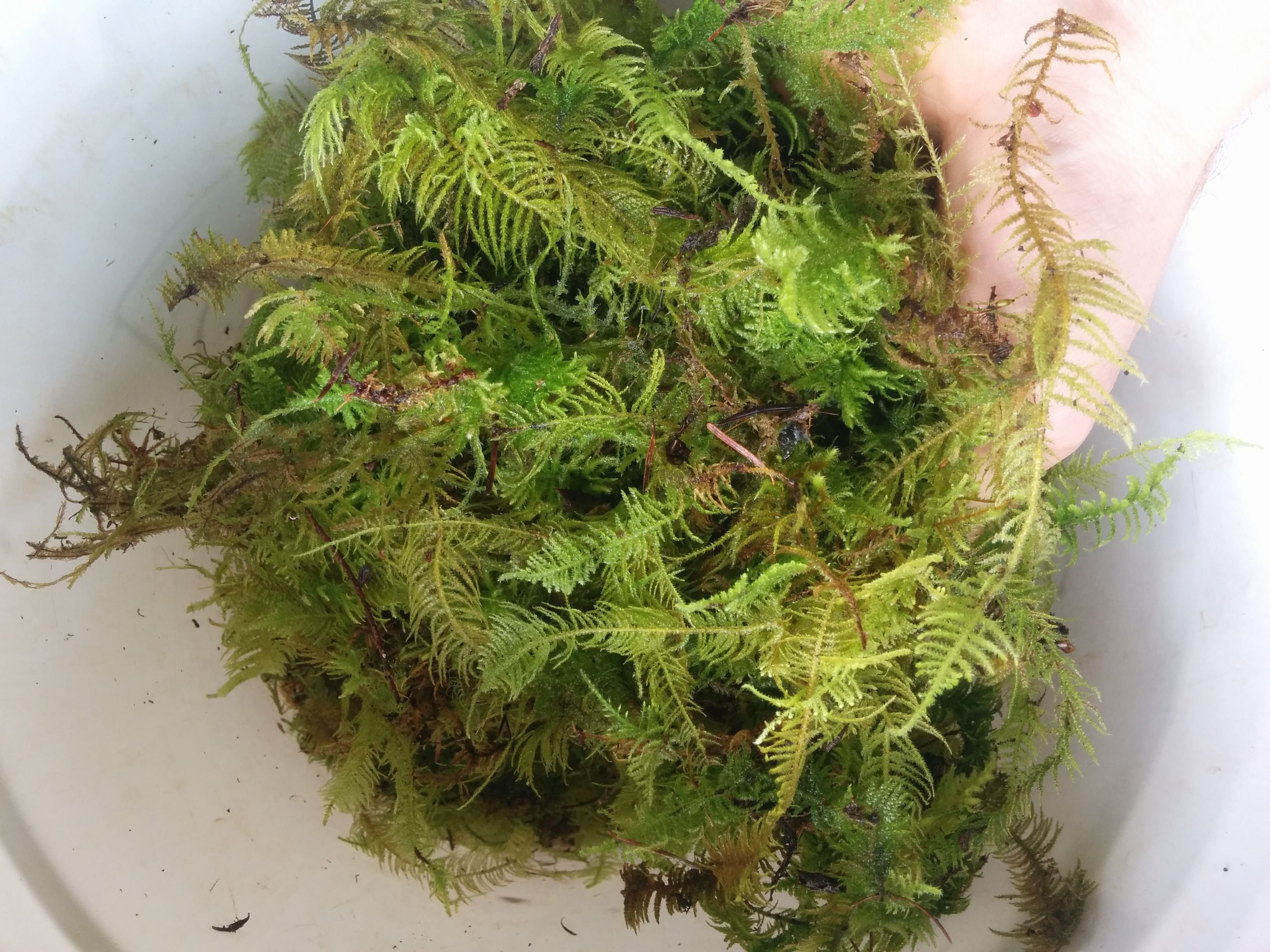
So I used a 50/50 mix of this moss and sand. Neither are sterile. I will be diligent about keeping an eye out for problems of anything funky growing in there and deal with it if it becomes an issue.
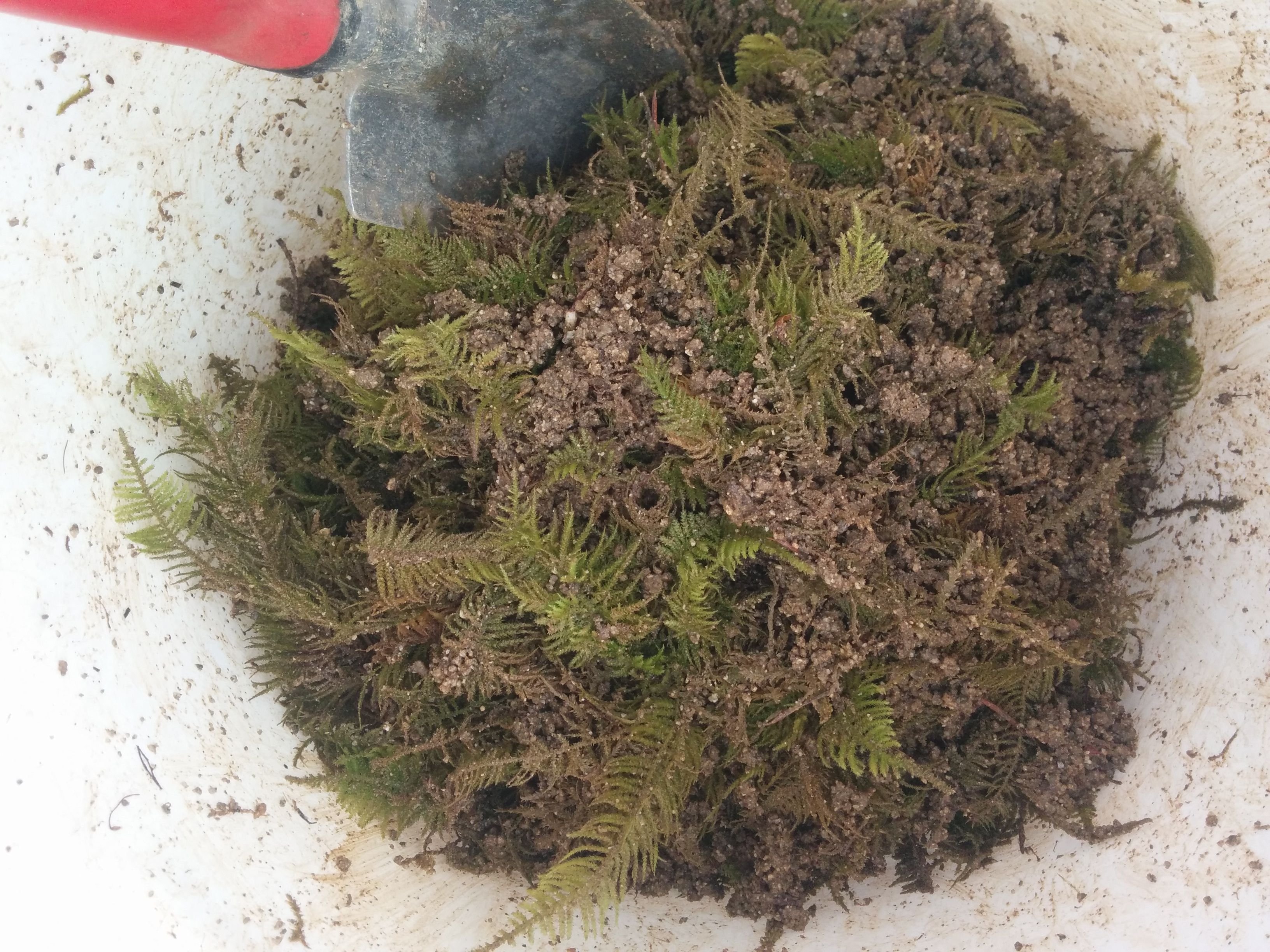
I put a small amount of the mixture into a baggy and added the seeds. Here are some plum seeds.
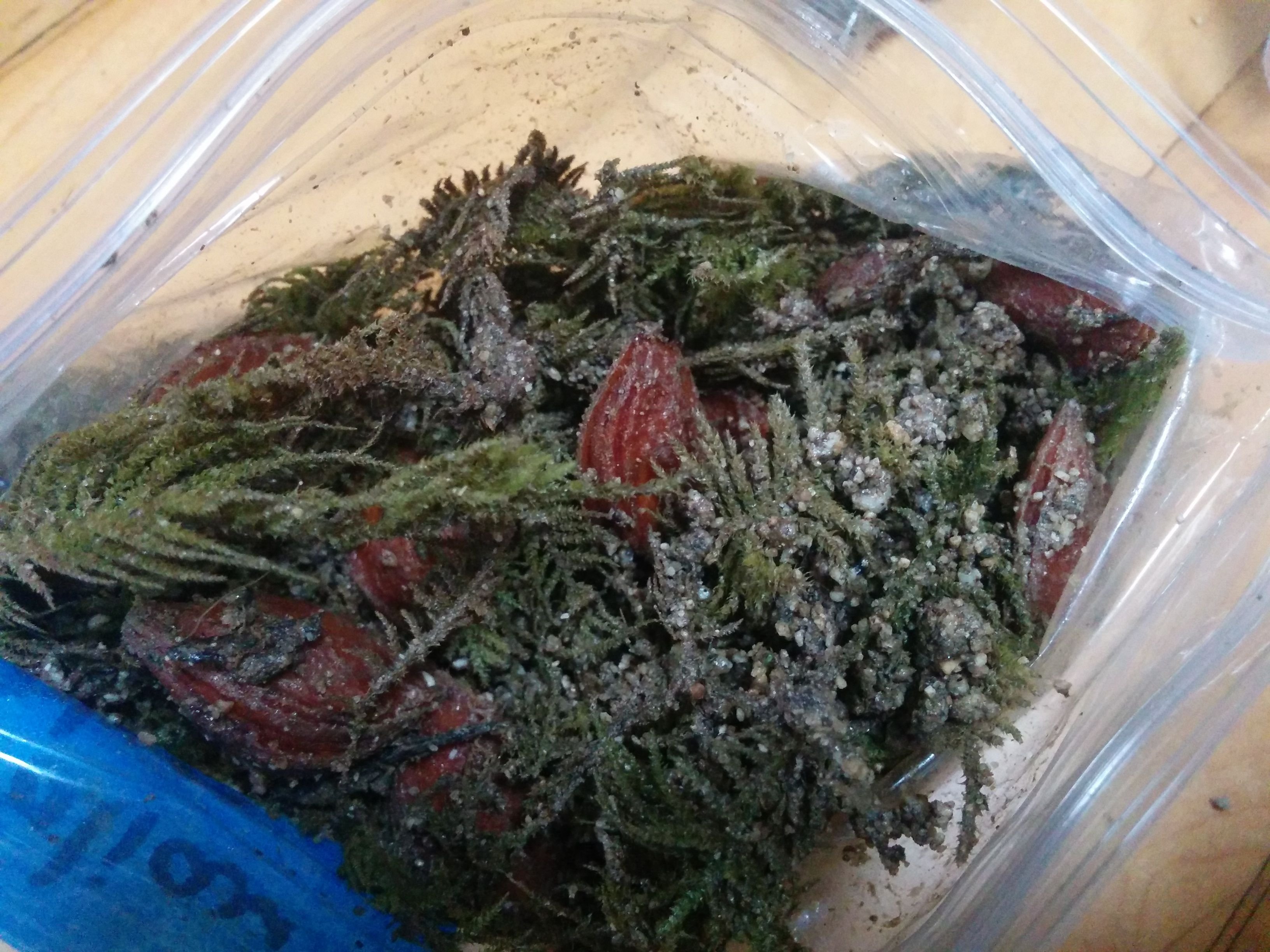
All of my bags are labeled and I keep track of the date their stratification period starts separately. Now I stick them in the fridge! My work is done for now.
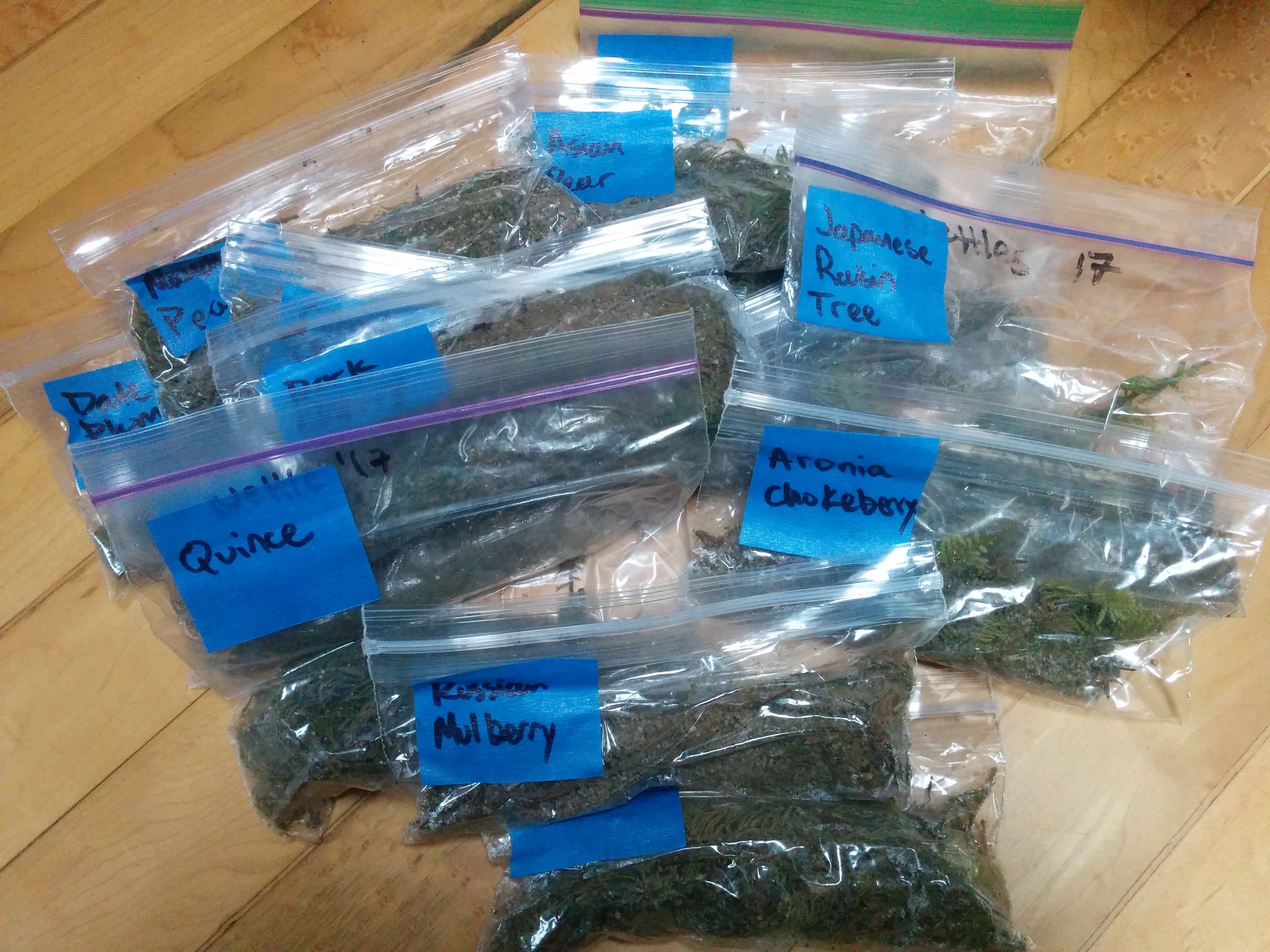
Scarification
Is this some kind of S&M? No.. well not for us, maybe for the seeds. Some seeds require scarification in order to unlock. Because their seed shell is so tough it takes some extra process to open them up. Ways that seeds can get scarified in the wild include heat (fire), abrasion (nicking or scraping), acid (passing through a bird's stomach).
In the case of several of the seeds I am stratifying I need to scarify them first by placing them in warm water for 24 hours. Don't lose track of which is which if you are doing more than one ;)
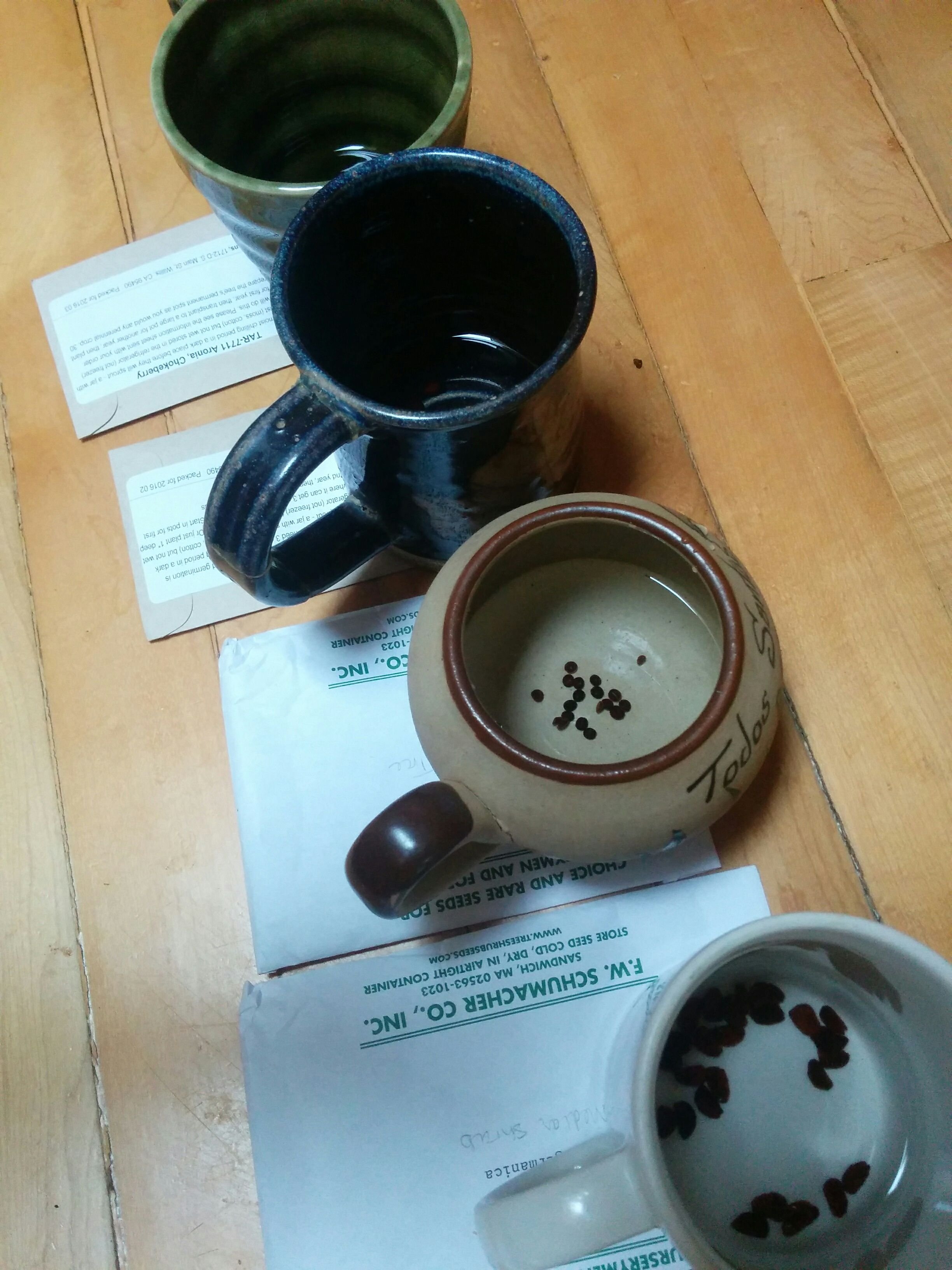
After the scarification is done, I take the seeds out and then put them into their stratification baggie and stick them in the fridge.
Some seeds require a long scarification period like 3-6 months. For those, I will put them in puts this spring or summer and let them sit in a warm place while keeping them moist, and then let them stratify outdoors next winter.
And by the way.. not all tree seeds need cold stratification. If your seeds don't you can skip the whole cold stratification thing and just plunk them in pots in early spring or whenever the weather is warm enough in your climate.
Propagating Native Nut Trees
The other day while I was hiking around looking for mushrooms I noticed an acorn sprouting on the forest floor.
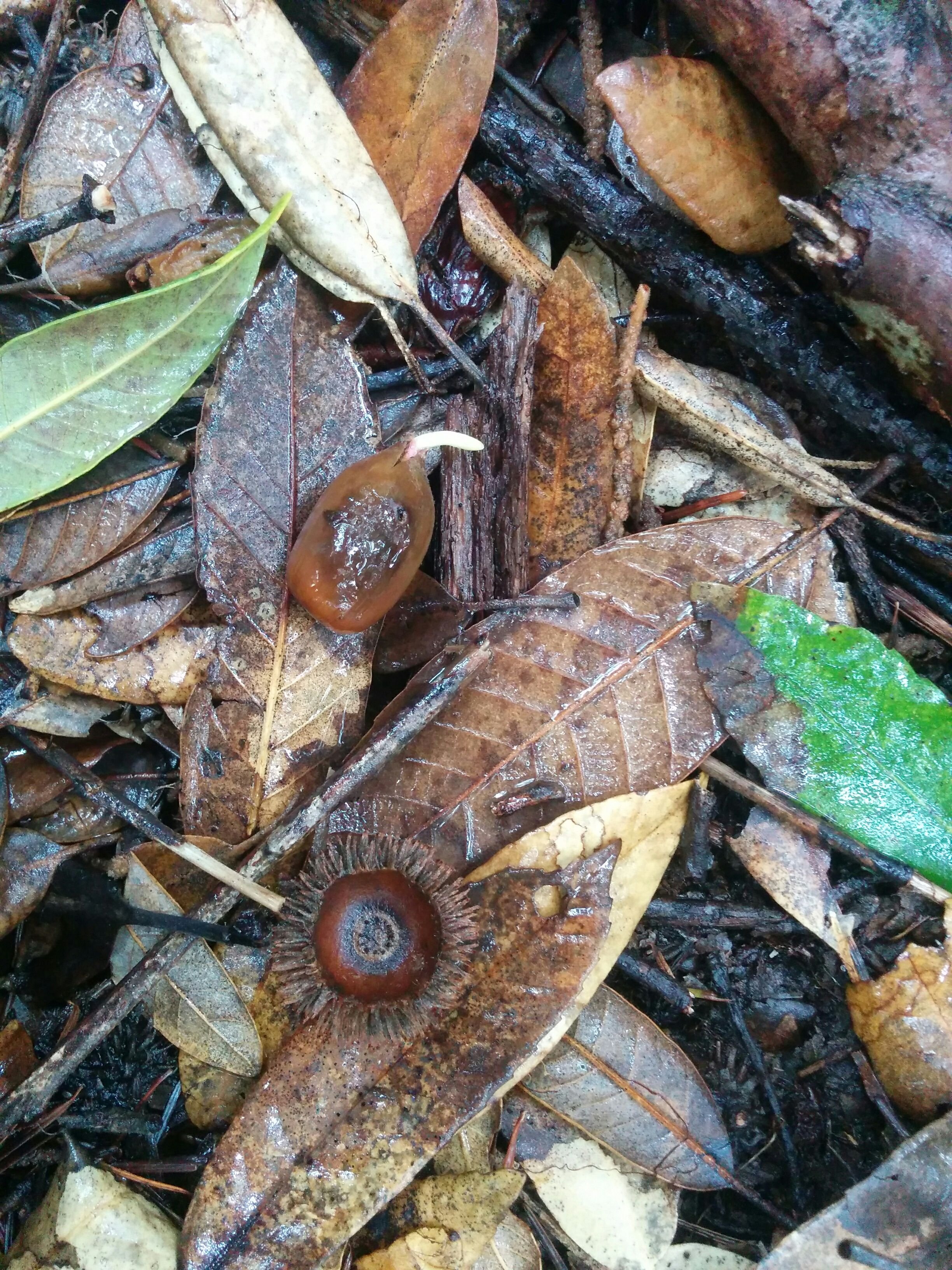
Wow that is so beautiful to witness a new life being born! As I looked closer they were sprouting everywhere! How incredible that the oak trees produced SO MUCH abundance of acorns last fall that after feeding critters all winter long there are still a huge abundance of nuts that are sprouting into potentially new trees. Also incredible is that the moisture and temperature conditions are just right for the nuts to sprout above the ground, they don't even need to be covered. That blows my mind and gives me more respect for nature.
With such an abundance of acorns sprouting I took the opportunity to bring some back with me to nurse into young trees to either plant or give away later. It will be fun to see what happens.
Nature already stratified AND germinated these seeds. All that's left to do is plant them :) I followed the same process as above covering them with a relatively thin layer of soil so that they stay moist.
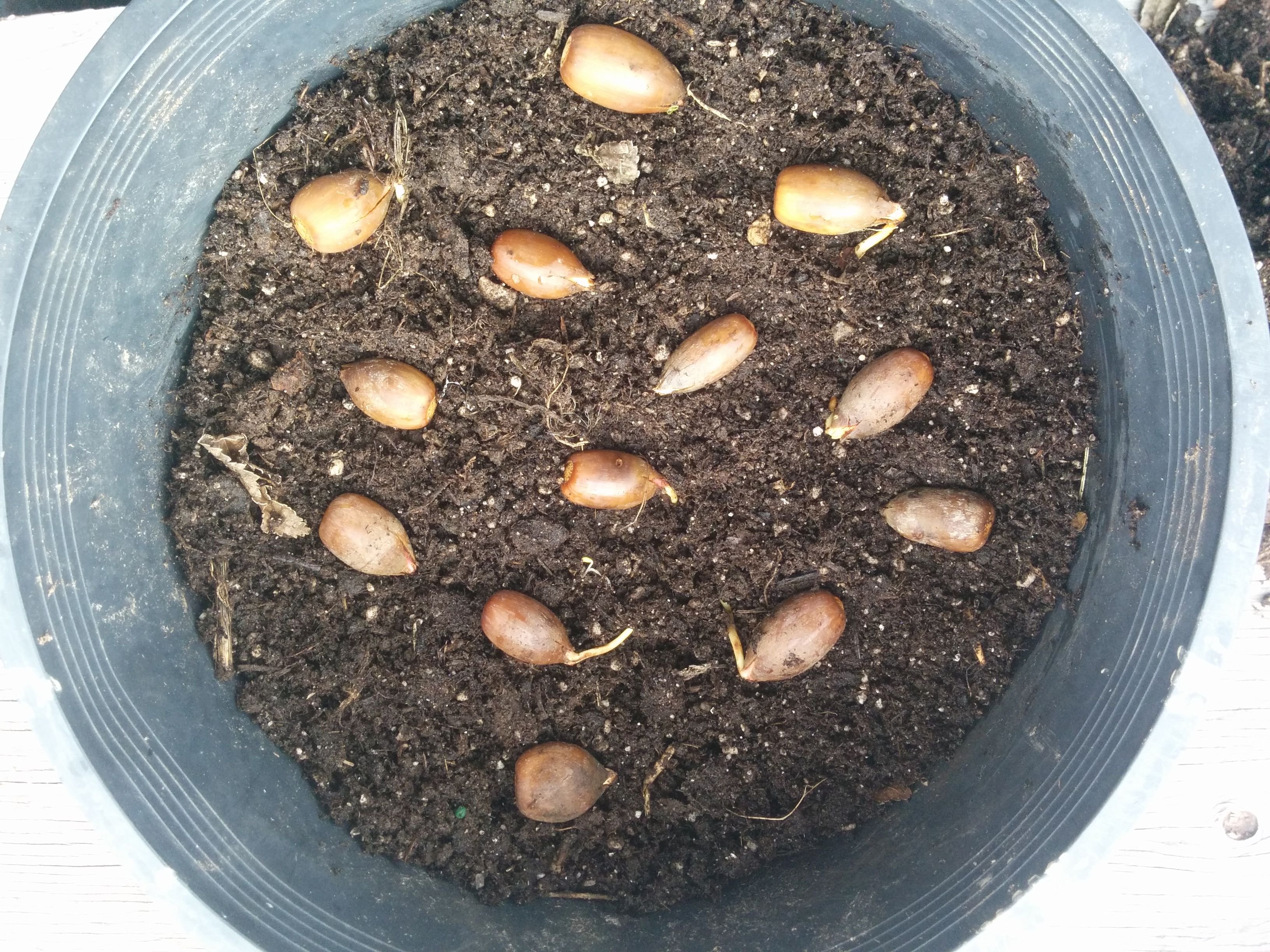
I hope you enjoyed this post! I'll definitely keep you updated throughout the year as the seeds do or don't germinate and grow.
Who is @sagescrub?
I am a ex-suburbanite turned permaculture homesteader. Follow my journey and I will share what I know and am learning along the way. You can learn more about me in my re-introducing @sagescrub post. Wishing you abundance in your life!
Please know that I am NOT an expert on any of the subjects that I present nor do I claim to be. So do your own research and take anything I say or do with a grain of salt!


